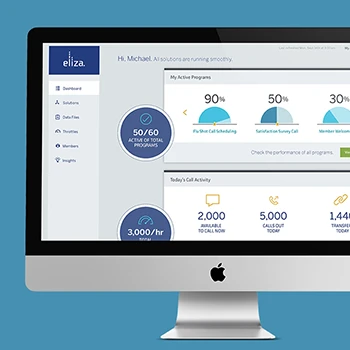What exactly is an AI UX strategy and why do tech companies need it now?
The AI UX strategy effectively integrates AI research and modeling into your UX strategy plan. Traditional strategy techniques provide powerful insights on customers and users, but emerging developments in AI have the potential to greatly enhance your products. Our strategic approach ensures you have a holistic product strategy that includes AI and data science without sacrificing traditional proven product definition methods. Through our Experience Thinking framework, we examine how AI impacts brand, content, product, and service experiences to create connected, end-to-end customer journeys that leverage artificial intelligence capabilities.
Tip: Start by auditing your current UX capabilities against AI integration opportunities rather than assuming AI will solve existing UX problems without strategic integration.
How does AI UX strategy differ from regular UX strategy work?
AI UX strategy requires sophisticated evaluation of where artificial intelligence enhances human capabilities versus where human judgment remains essential. We help organizations identify appropriate AI applications for research synthesis, design exploration, and testing automation while maintaining quality standards and ethical practices. The goal is augmenting UX expertise rather than replacing professional judgment in complex experience decisions. This includes understanding AI's role in predictive user modeling, personalization systems, and automated content generation.
Tip: Begin with AI integration in data analysis and pattern recognition tasks rather than creative or strategic decision-making to build confidence before expanding AI involvement.
Why should we invest in AI UX strategy instead of traditional UX consulting?
Organizations need AI UX strategy because artificial intelligence fundamentally changes how users interact with products and services. Traditional UX methods alone cannot address the complexity of AI-driven experiences, personalization systems, or predictive interfaces. Our approach combines proven Experience Thinking principles with AI-specific methodologies to create experiences that are both human-centered and technologically sophisticated. We help you understand how AI affects the complete experience lifecycle - from customer awareness to loyal client relationships.
Tip: Evaluate your product roadmap against AI integration opportunities now rather than waiting until competitors have already implemented AI-driven user experiences.
What makes Akendi's approach to AI UX strategy unique?
Our Experience Thinking framework elevates AI UX practices by connecting brand, content, product, and service experiences into holistic systems thinking. Unlike approaches that focus primarily on AI features, Experience Thinking integrates artificial intelligence across all customer touchpoints rather than optimizing individual AI components in isolation. This holistic approach helps mature UX organizations connect all AI touchpoints rather than implementing artificial intelligence in disconnected silos.
Tip: Map your current AI initiatives against all four Experience Thinking quadrants to identify strategic gaps where disconnected AI efforts might be limiting overall experience impact.
How do you address AI ethics and bias in UX strategy work?
AI implementation across UX organizations requires governance frameworks that ensure consistent quality, maintain ethical standards, and avoid creating capability dependencies that limit strategic flexibility. We help organizations develop AI adoption strategies, training programs, and governance systems that leverage AI benefits while maintaining UX professional development and strategic autonomy. This includes establishing validation frameworks and quality controls for AI-generated insights and ensuring diverse perspectives are represented in AI training data and algorithm development.
Tip: Develop organization-wide AI governance policies and training programs before widespread tool adoption to ensure consistent and ethical AI usage across all UX functions.
What role does foresight design play in AI UX strategy?
Foresight design integrates strategic foresight with UX design thinking to anticipate how AI will reshape user needs and market dynamics. This approach helps us predict what will resonate with users before they realize they need it, especially important given AI's rapidly evolving capabilities. We use foresight design methods to explore potential AI futures, identify emerging interaction patterns, and prepare experience strategies that remain relevant as artificial intelligence advances. This includes scenario planning for different AI adoption rates and user acceptance levels.
Tip: Establish dedicated capacity for AI and emerging technology experimentation rather than trying to integrate new AI capabilities into existing project workflows and timelines.
How do you measure success in AI UX strategy projects?
Advanced AI UX measurement goes beyond usability metrics to include AI performance impact, user trust in automated systems, and competitive positioning through AI capabilities. We help establish measurement frameworks that connect AI-enhanced experience quality to business outcomes, develop advanced analytics capabilities, and create reporting systems that support strategic decision-making rather than just proving AI UX value. This includes tracking user adoption of AI features, satisfaction with AI-driven personalization, and business metrics affected by AI implementation.
Tip: Develop measurement capabilities that predict business outcomes from AI-enhanced experience data rather than just reporting on AI feature usage and satisfaction scores.
How do you help us create an AI UX roadmap that aligns with business goals?
We develop AI UX roadmaps through Experience Thinking methodology that examines how artificial intelligence enhances each quadrant of your customer experience. This includes AI applications in brand expression, content personalization, product intelligence, and service automation. Our roadmaps balance innovation opportunities with practical implementation constraints, ensuring AI initiatives support both user needs and business objectives. We create strategic prioritization frameworks that help you sequence AI investments for maximum impact.
Tip: Focus AI UX roadmap development on business model innovation and competitive differentiation rather than just improving current user satisfaction scores through automation.
What's your process for identifying AI opportunities in existing user experiences?
We analyze your current experience ecosystem through the Experience Thinking framework to identify where AI can enhance brand consistency, content relevance, product usability, and service efficiency. This includes journey mapping to find friction points that AI could resolve, behavioral analysis to identify patterns AI could predict, and stakeholder interviews to understand where automation would add value. Our process reveals both obvious AI applications and hidden opportunities that competitors might miss.
Tip: Create integrated analysis workflows that use AI to identify behavioral patterns and prioritize qualitative research focus areas rather than replacing human research with automated analysis.
How do you balance AI automation with human-centered design principles?
Our approach ensures AI enhances rather than replaces human-centered experiences. We identify where AI provides value - such as personalization, prediction, and efficiency - while maintaining human agency in important decisions. Through Experience Thinking, we design AI systems that feel natural across brand interactions, content consumption, product usage, and service delivery. This includes creating transparency in AI decision-making and providing users with control over automated systems.
Tip: Design AI systems that augment human capabilities rather than replacing human judgment in emotionally sensitive or high-stakes user interactions.
What frameworks do you use for AI UX strategy development?
Experience Thinking becomes transformational when combined with AI strategy because it shapes how artificial intelligence integrates across business models, not just improves interfaces. We help organizations identify AI-driven competitive advantages, develop new value propositions through intelligent experiences, and create organizational capabilities that sustain AI-enhanced experience leadership. This includes strategic planning methods, business case development, and change management approaches specific to AI experience transformation.
Tip: Position AI UX leadership as transformation partners in digital initiatives rather than just service providers who implement AI designs for technology projects.
How do you help us understand competitive AI UX landscape?
Strategic AI UX organizations need sophisticated understanding of competitive landscape and market positioning around artificial intelligence capabilities. We help develop competitive analysis frameworks, market research capabilities, and positioning strategies that leverage AI experience differentiation. This includes developing intelligence gathering systems, competitor AI experience auditing, and strategic planning approaches that identify AI market opportunities that others haven't discovered yet.
Tip: Create ongoing competitive intelligence systems that track AI experience innovation trends rather than just periodic competitor interface analysis.
What's your approach to AI UX risk assessment and mitigation?
We develop comprehensive risk frameworks that address technical AI failures, user trust issues, ethical concerns, and competitive threats. Our risk assessment includes scenario planning for different AI adoption outcomes, user acceptance variations, and market response possibilities. Through foresight design methods, we help you prepare for multiple AI futures and develop contingency strategies that protect your experience quality regardless of how AI technology evolves.
Tip: Allocate specific percentage of AI UX resources to pure exploration and risk mitigation rather than trying to innovate within existing optimization processes.
How do you integrate AI UX strategy with existing digital transformation initiatives?
AI UX strategy integration requires understanding how AI experience capabilities connect to technology architecture, business processes, and organizational change initiatives. We help position AI UX as a transformation enabler rather than just a design function, developing capabilities that influence technology decisions, process redesign, and organizational development through AI experience lens. This ensures your AI investments create connected experiences rather than isolated intelligent features.
Tip: Map AI UX initiatives against your complete digital transformation portfolio to identify synergies and avoid creating disconnected AI experiences.
How do you conduct user research for AI-enhanced experiences?
Beyond standard usability testing, we introduce AI-specific research methods including algorithm transparency studies, personalization acceptance testing, and AI interaction pattern analysis. These approaches help organizations understand how users build trust with AI systems, what level of automation they prefer, and how AI affects their task completion strategies. We combine behavioral observation with attitude measurement to understand both what users do with AI and how they feel about it.
Tip: Implement longitudinal research programs that track AI experience evolution over customer lifecycle stages rather than relying solely on point-in-time AI usability studies.
What research methods work best for understanding AI user needs?
AI can significantly enhance research analysis by identifying patterns across large datasets, synthesizing qualitative findings about user AI preferences, and generating initial insight hypotheses for human validation. We help organizations develop AI-assisted research workflows that accelerate analysis of user behavior with intelligent systems while maintaining research quality and avoiding bias introduction. This includes establishing validation frameworks and quality controls for AI-generated research insights.
Tip: Use AI for initial pattern identification and hypothesis generation but always validate AI insights through human analysis and additional research before making strategic AI UX decisions.
How do you test AI features with users before full development?
AI prototyping tools can accelerate design exploration by generating AI behavior variations, suggesting intelligent interaction patterns, and rapidly creating testable AI concepts for validation. We help organizations integrate AI prototyping tools into exploration workflows while maintaining creative control and ensuring generated AI concepts align with experience strategy and user needs. This includes developing evaluation frameworks for AI-generated design concepts and interaction patterns.
Tip: Use AI prototyping tools for rapid concept generation and variation exploration while maintaining human oversight for AI concept evaluation and strategic design direction.
What's your approach to researching user trust in AI systems?
User trust research for AI systems requires specialized methodologies that examine transparency preferences, control needs, and confidence building over time. We study how users develop mental models of AI behavior, what explanations they need for AI decisions, and how trust varies across different AI applications. Our research reveals the balance between AI capability and user comfort, helping design systems that users will actually adopt and rely on.
Tip: Focus trust research on progressive disclosure of AI capabilities rather than overwhelming users with complete AI functionality explanations upfront.
How do you research AI accessibility and inclusive design needs?
AI accessibility research examines how artificial intelligence affects users with different abilities, technology comfort levels, and cultural backgrounds. We study how AI can enhance accessibility through intelligent adaptations while ensuring AI systems remain usable for everyone. This includes researching voice AI for users with motor impairments, visual AI for users with vision differences, and cognitive AI support for users with different processing needs.
Tip: Include diverse user groups in AI research from the beginning rather than trying to retrofit accessibility into AI systems after development.
What data do you need from us to start AI UX research?
We need access to current user behavior data, existing AI implementations, business objectives for AI enhancement, and technical constraints around AI development. This includes user journey data, interaction patterns, performance metrics, and stakeholder goals for AI integration. We also need to understand your users' current relationship with AI technology and their expectations for intelligent experiences.
Tip: Prepare anonymous user behavior data and current AI performance metrics before research begins to accelerate insight development and strategy formation.
How do you design AI interfaces that users actually want to use?
AI interface design requires balancing intelligent automation with user agency and understanding. Through Experience Thinking methodology, we design AI interfaces that enhance brand experience through consistent intelligent behavior, content experience through smart personalization, product experience through predictive functionality, and service experience through proactive assistance. The key is making AI feel helpful rather than intrusive, transparent rather than mysterious.
Tip: Design AI interfaces that clearly communicate what the AI is doing and why, rather than hiding AI intelligence behind seemingly magic interactions.
What's your process for designing AI-powered personalization?
AI personalization design starts with understanding what aspects of the experience users want customized versus what should remain consistent. We design personalization systems that respect user privacy while delivering relevant experiences across brand touchpoints, content delivery, product recommendations, and service interactions. Our approach ensures personalization feels helpful and accurate rather than creepy or invasive.
Tip: Start with explicit user preferences and gradually introduce implicit AI personalization as users build trust with your intelligent systems.
How do you create AI design systems that scale across products?
AI can help automate design system compliance checking, generate design variations, and identify inconsistencies across large design inventories. We help organizations implement AI tools that support design system governance, component optimization, and quality assurance while maintaining human oversight for strategic design decisions. The focus is on using AI to scale design system operations rather than replace design judgment in AI experience decisions.
Tip: Implement AI tools for design system maintenance and compliance monitoring while keeping human designers responsible for AI system evolution and strategic AI design decisions.
What AI design patterns do you recommend for different industries?
AI design patterns vary significantly based on user context, regulatory requirements, and business models. For financial services, we emphasize transparency and security in AI decision-making. For healthcare, we focus on AI that enhances rather than replaces professional judgment. For retail, we design AI that personalizes without overwhelming. Each pattern considers the Experience Thinking framework to ensure AI integration across all customer touchpoints.
Tip: Choose AI design patterns based on your users' risk tolerance and familiarity with AI rather than just technical capabilities or industry trends.
How do you handle AI errors and edge cases in design?
AI error handling requires designing for graceful degradation when AI systems fail or produce unexpected results. We create fallback experiences that maintain user confidence, clear communication about AI limitations, and recovery paths when AI doesn't meet user needs. This includes designing error states that educate users about AI capabilities rather than just apologizing for failures.
Tip: Design AI error states as learning opportunities that help users understand system capabilities rather than just functional fallbacks.
What's your approach to AI content strategy and generation?
AI content strategy examines how artificial intelligence can enhance content creation, curation, and personalization while maintaining brand voice and quality standards. We help design AI content systems that understand your brand personality, user preferences, and contextual needs to generate relevant, engaging content at scale. This includes establishing guidelines for AI-generated content review and ensuring human oversight maintains content strategy alignment.
Tip: Establish clear content guidelines and review processes for AI-generated material rather than assuming AI will naturally align with your brand voice and quality standards.
How do you test AI UX effectiveness with real users?
AI UX testing requires specialized methodologies that examine both functional performance and user acceptance of intelligent systems. We test AI accuracy, response time, personalization quality, and user trust development over extended periods. Our testing reveals not just whether AI works technically, but whether users understand, trust, and want to continue using AI-enhanced features in their daily workflows.
Tip: Test AI UX effectiveness through multiple sessions over time rather than single testing sessions to understand how user relationships with AI develop.
What metrics matter most for AI user experience success?
AI UX metrics include traditional usability measures plus AI-specific indicators like prediction accuracy, personalization relevance, user trust scores, and AI feature adoption rates. We track how AI affects task completion time, error rates, user satisfaction, and long-term engagement with intelligent features. The goal is understanding whether AI truly improves user outcomes rather than just demonstrating technical AI capabilities.
Tip: Balance AI performance metrics with user experience quality measures to ensure technical AI success translates to actual user value.
How do you validate AI UX strategies before full implementation?
AI UX strategy validation requires methods that go beyond usability testing to include business model validation, stakeholder alignment assessment, and organizational capability evaluation for AI implementation. We help develop validation frameworks that test strategic AI assumptions, pilot AI implementation approaches, and measure AI strategy effectiveness before large-scale commitment. This includes testing user acceptance of AI across different scenarios and use cases.
Tip: Create validation approaches that test both user acceptance and organizational capability to execute AI UX strategies rather than just user interface AI preferences.
What's your process for A/B testing AI features?
AI A/B testing requires sophisticated experimental design that accounts for AI learning over time, personalization effects, and user adaptation to intelligent systems. We design experiments that isolate AI impact while controlling for user differences, time effects, and contextual variables. Our A/B testing reveals which AI features provide genuine value versus those that seem intelligent but don't improve user outcomes.
Tip: Design AI A/B tests with longer time horizons than typical feature testing to account for user learning and AI system improvement over time.
How do you test AI experiences across different user segments?
AI experience testing across user segments examines how different user groups interact with intelligent systems based on their technical comfort, domain expertise, and contextual needs. We test AI with novice and expert users, different age groups, varied cultural backgrounds, and distinct use cases to ensure AI systems work well for your complete user base rather than just early AI adopters.
Tip: Test AI experiences with users who are skeptical of AI technology, not just enthusiastic early adopters, to understand adoption barriers.
What happens if AI testing reveals user resistance or concerns?
User resistance to AI often reveals opportunities to improve AI transparency, control, or value proposition rather than problems with AI technology itself. We help organizations understand the root causes of AI resistance - whether it's fear, confusion, lack of perceived value, or bad previous AI experiences - and design solutions that address these underlying concerns through better AI communication and interaction design.
Tip: Treat AI user resistance as valuable feedback about AI experience design rather than just user education opportunities.
How do you support AI UX implementation with development people?
AI UX implementation requires close collaboration between design, development, and data science groups to ensure AI systems deliver the intended user experience. We provide ongoing design support throughout AI development, create detailed AI interaction specifications, and conduct regular design reviews to maintain AI experience quality. This includes guidance on AI performance requirements that affect user experience.
Tip: Establish regular cross-functional review sessions during AI development rather than waiting until AI features are fully built to evaluate user experience quality.
What training do you provide for internal professionals working on AI UX?
We provide AI UX training that helps internal professionals understand how artificial intelligence affects user experience design, research, and strategy. Training covers AI capabilities and limitations, ethical AI design practices, user research methods for AI systems, and how to collaborate effectively with data science people. Our training builds organizational capability rather than just project-specific AI knowledge.
Tip: Focus AI UX training on principles and frameworks rather than specific AI tools to build capabilities that remain relevant as AI technology evolves.
How do you help establish AI UX governance and standards?
AI UX governance requires frameworks that provide guidance without stifling AI innovation. We help establish AI design principles, decision-making authorities for AI features, and approval processes that maintain AI experience quality standards while enabling rapid AI experimentation. This includes creating governance systems that scale across large organizations without creating bureaucratic overhead for AI development.
Tip: Design AI governance systems that focus on outcomes and principles rather than detailed process requirements to maintain flexibility while ensuring AI experience consistency.
What ongoing support do you provide after AI UX implementation?
AI systems evolve continuously through learning and updates, requiring ongoing UX monitoring and optimization. We provide post-launch AI experience monitoring, user feedback analysis, AI performance optimization recommendations, and guidance for AI system evolution. This includes helping organizations understand when AI changes affect user experience and how to maintain AI experience quality over time.
Tip: Plan for ongoing AI UX optimization rather than treating AI implementation as a one-time project with a fixed endpoint.
How do you help us build internal AI UX capabilities?
Building internal AI UX capabilities requires developing both individual skills and organizational systems for AI experience design. We help establish AI UX communities of practice, AI design system governance, and knowledge management systems that capture and distribute AI UX insights effectively. This includes creating learning pathways, mentorship programs, and documentation systems that enable rapid AI capability transfer across professional groups.
Tip: Create structured AI knowledge sharing systems with dedicated time and incentives rather than expecting informal AI knowledge transfer to happen naturally.
How do you demonstrate ROI from AI UX strategy investments?
AI UX ROI includes both efficiency gains and revenue growth from intelligent experiences that users prefer over competitors. We track metrics like increased user engagement with AI features, reduced support costs through AI assistance, higher conversion rates from AI personalization, and improved customer retention through intelligent experiences. The key is connecting AI UX improvements to business outcomes rather than just technical AI performance.
Tip: Establish baseline business metrics before AI UX implementation to accurately measure AI impact on revenue, costs, and user satisfaction.
What competitive advantages does AI UX strategy create?
AI UX strategy creates competitive advantages through experiences that are more personalized, predictive, and efficient than traditional interfaces. Users increasingly expect intelligent experiences, and organizations with superior AI UX can differentiate through better user understanding, proactive assistance, and seamless AI integration. Through foresight design principles, we help you anticipate future AI user expectations and build competitive advantages that are difficult for competitors to replicate.
Tip: Focus AI UX competitive advantages on user experience quality rather than just AI technical capabilities that competitors can eventually replicate.
How does AI UX strategy affect customer acquisition and retention?
AI UX strategy affects the complete customer lifecycle through Experience Thinking principles applied to intelligent systems. AI can enhance brand experience through consistent intelligent interactions, content experience through personalized information delivery, product experience through predictive functionality, and service experience through proactive support. This holistic AI integration creates customer experiences that are more engaging, efficient, and valuable than competitors without AI UX strategy.
Tip: Design AI experiences that provide immediate value to new users rather than requiring long learning periods before AI benefits become apparent.
What business risks does AI UX strategy help avoid?
AI UX strategy helps avoid risks including user rejection of poorly designed AI features, competitive disadvantage from lack of intelligent experiences, regulatory issues from non-transparent AI systems, and technical debt from AI implementations that don't consider user needs. Our strategic approach identifies these risks early and develops mitigation strategies that protect your investment while enabling AI innovation.
Tip: Assess AI UX risks across regulatory compliance, user acceptance, and competitive positioning rather than just technical AI implementation risks.
How do you help build business cases for AI UX initiatives?
Advanced AI UX initiatives require sophisticated business cases that connect AI experience investments to strategic business outcomes. We help UX leaders develop communication frameworks, financial modeling approaches, and stakeholder engagement strategies that secure support for AI experience transformation initiatives. This includes developing executive education approaches and success measurement systems that maintain organizational support for AI UX investments.
Tip: Develop AI business cases based on competitive advantage and market opportunity rather than just efficiency improvements and cost savings to secure strategic-level investment.
What industries benefit most from AI UX strategy services?
Industries with complex user interactions, large datasets, and competitive pressure benefit most from AI UX strategy. This includes technology companies building AI-powered products, financial services needing intelligent customer experiences, healthcare organizations improving patient interactions, retail companies personalizing shopping experiences, and any industry where AI can enhance user outcomes. The key is having users who value intelligent assistance and personalization.
Tip: Evaluate your industry's AI adoption trends and user expectations rather than just your organization's current AI capabilities when planning AI UX strategy.
How is artificial intelligence changing user expectations and behavior?
Artificial intelligence is fundamentally changing user expectations around personalization, prediction, and proactive assistance. Users increasingly expect systems to understand their preferences, anticipate their needs, and provide intelligent recommendations. However, users also want transparency in AI decision-making and control over automated systems. This creates design challenges around balancing AI capability with user agency, requiring sophisticated UX strategies that make AI feel helpful rather than intrusive or mysterious.
Tip: Study how your users currently interact with AI in other products and services to understand their AI expectations and comfort levels before designing your own AI experiences.












